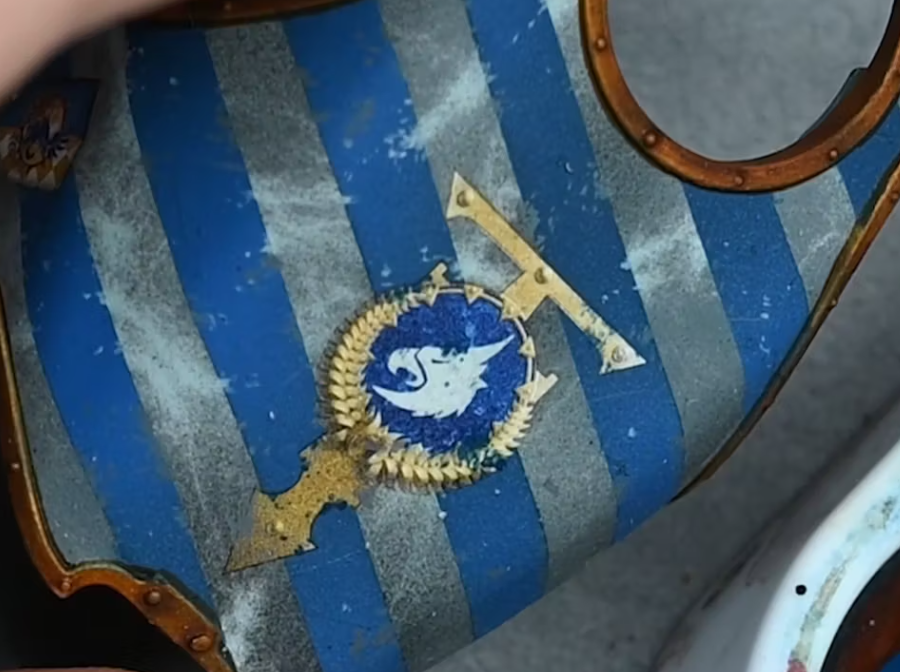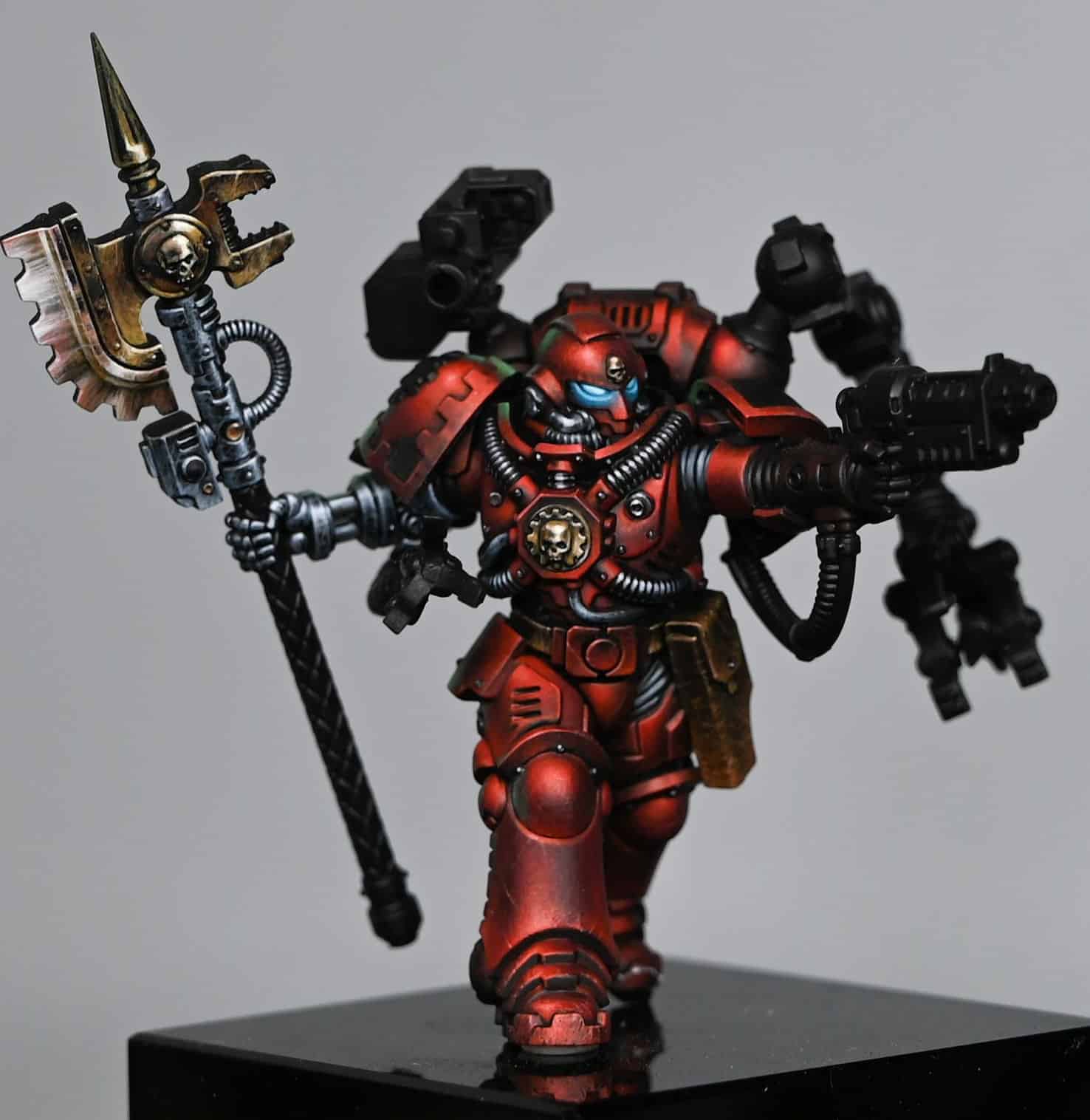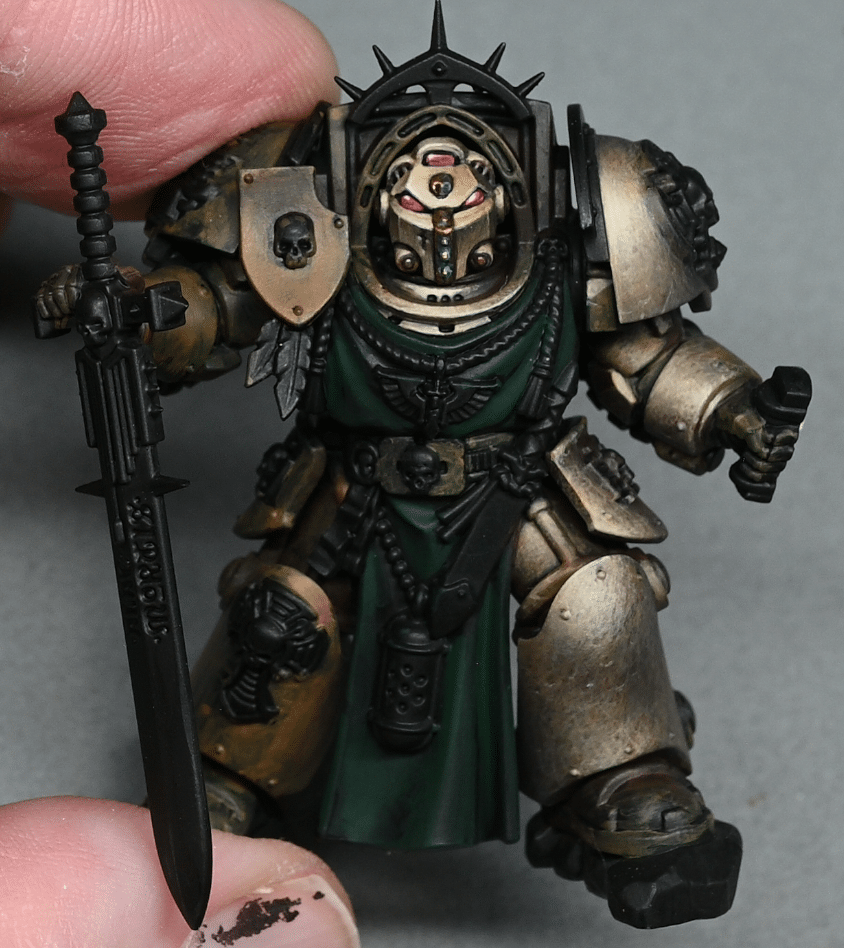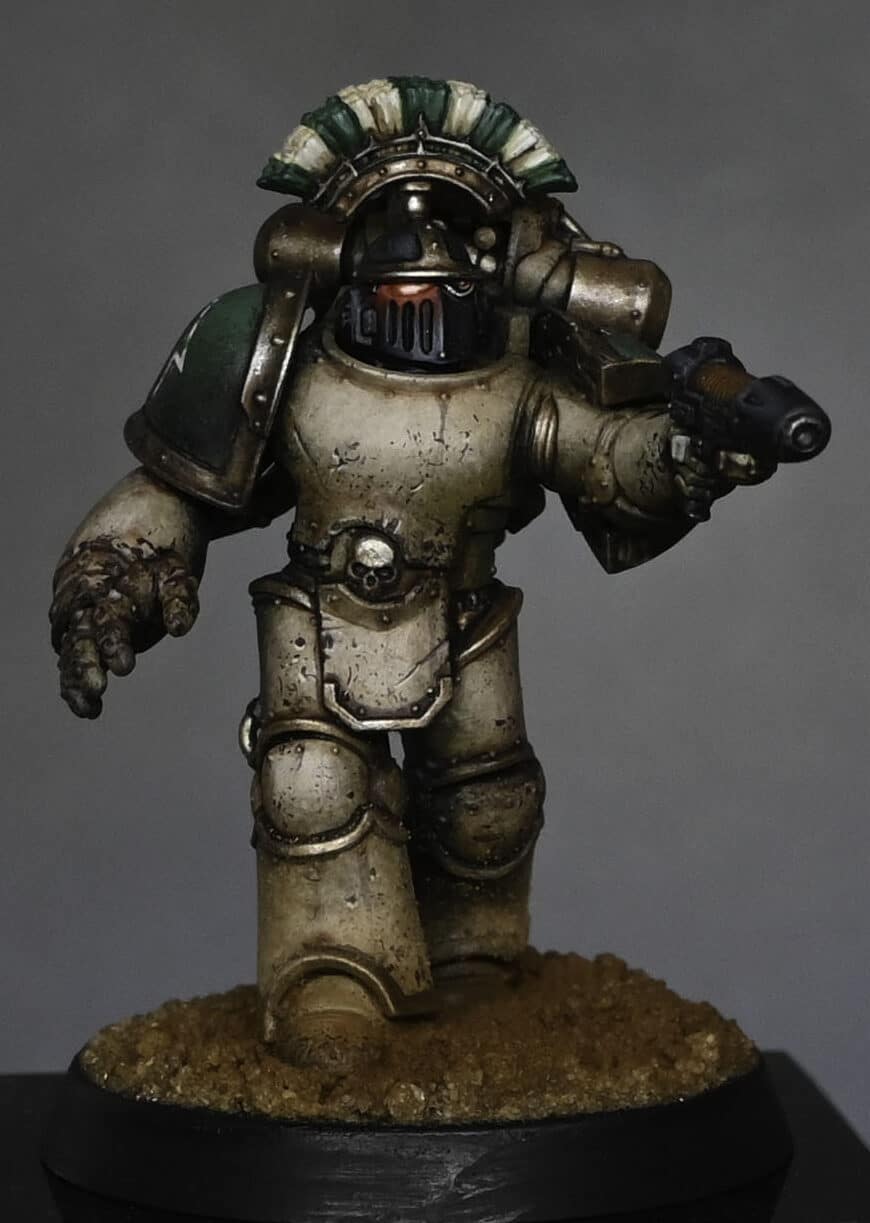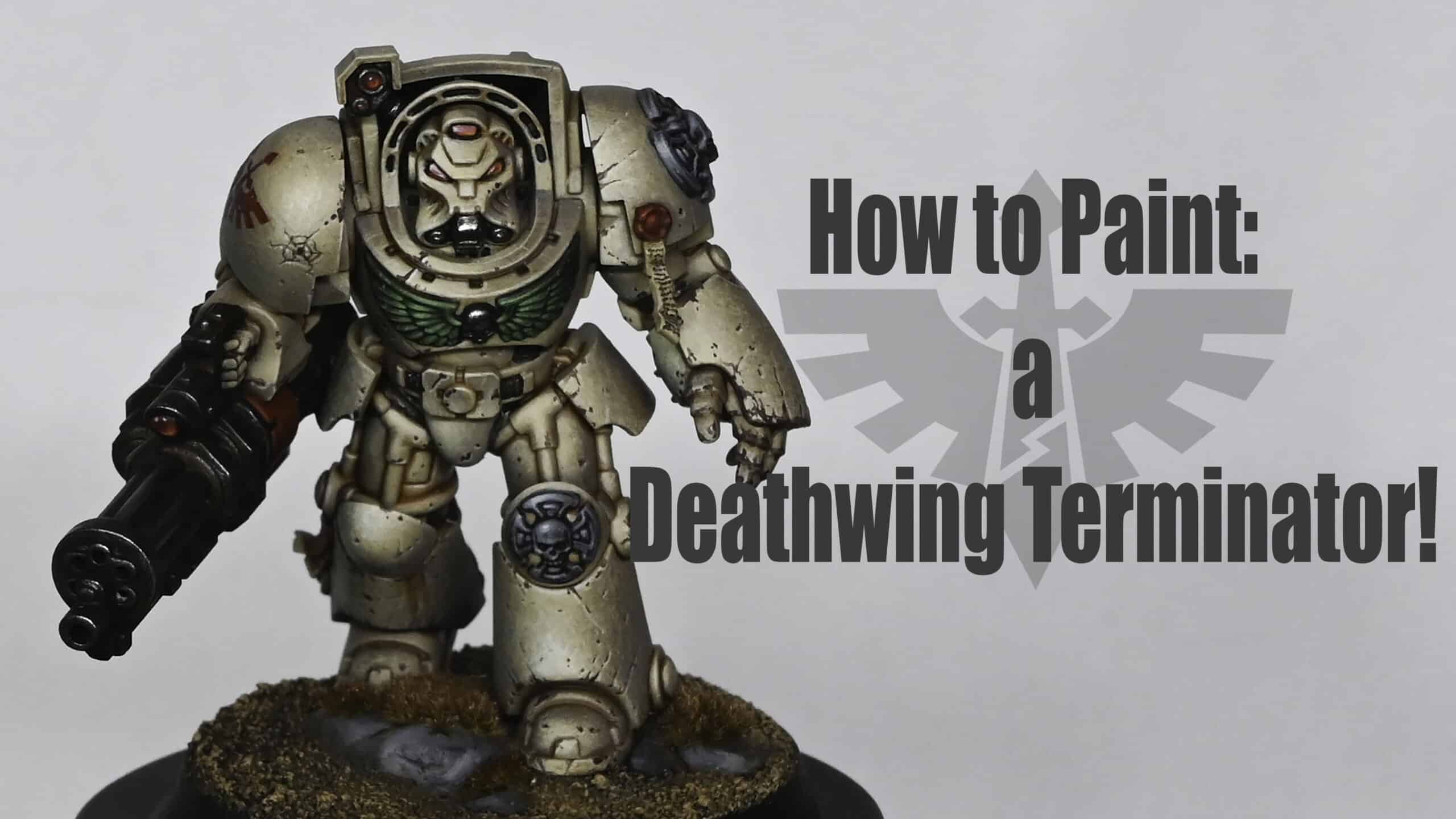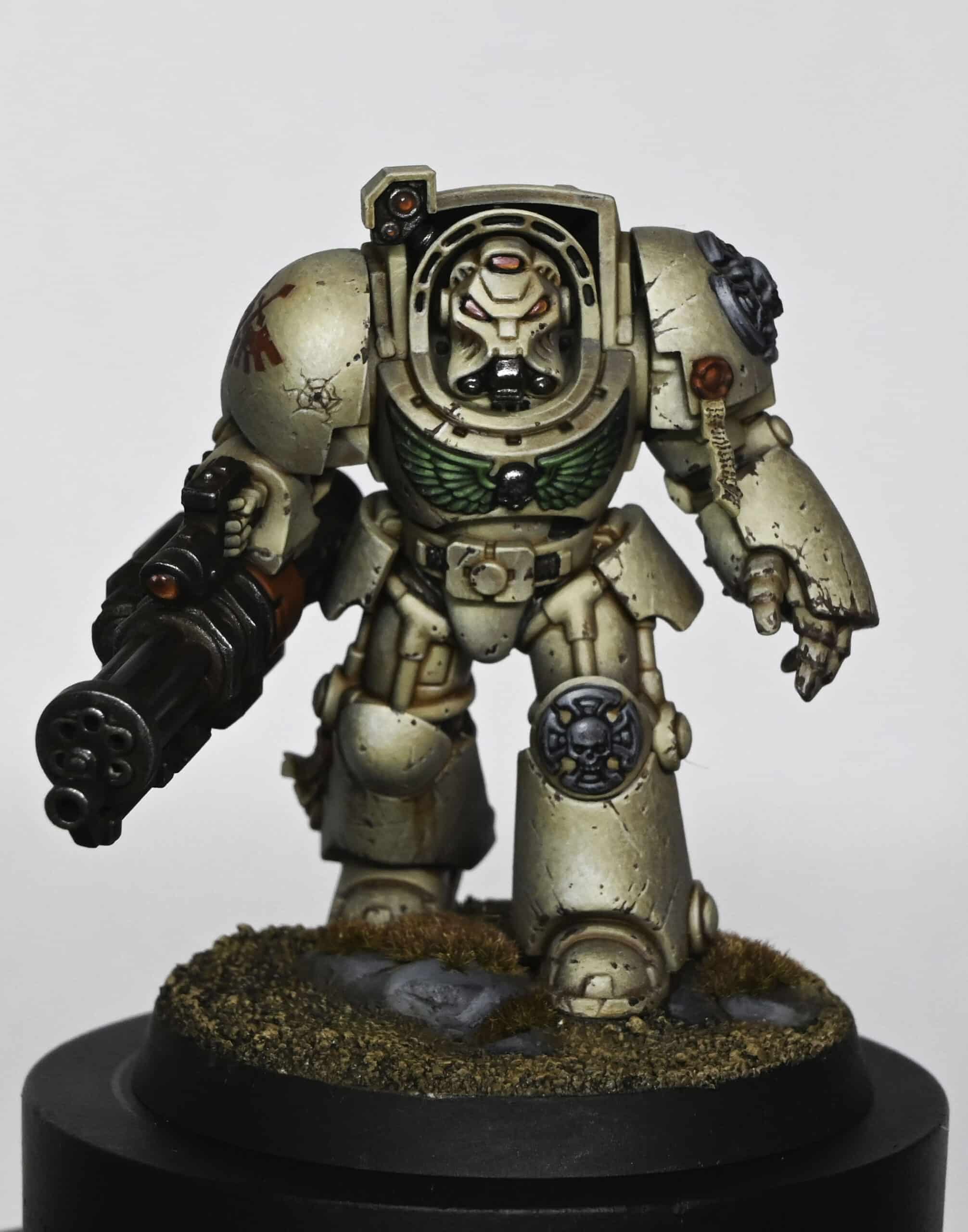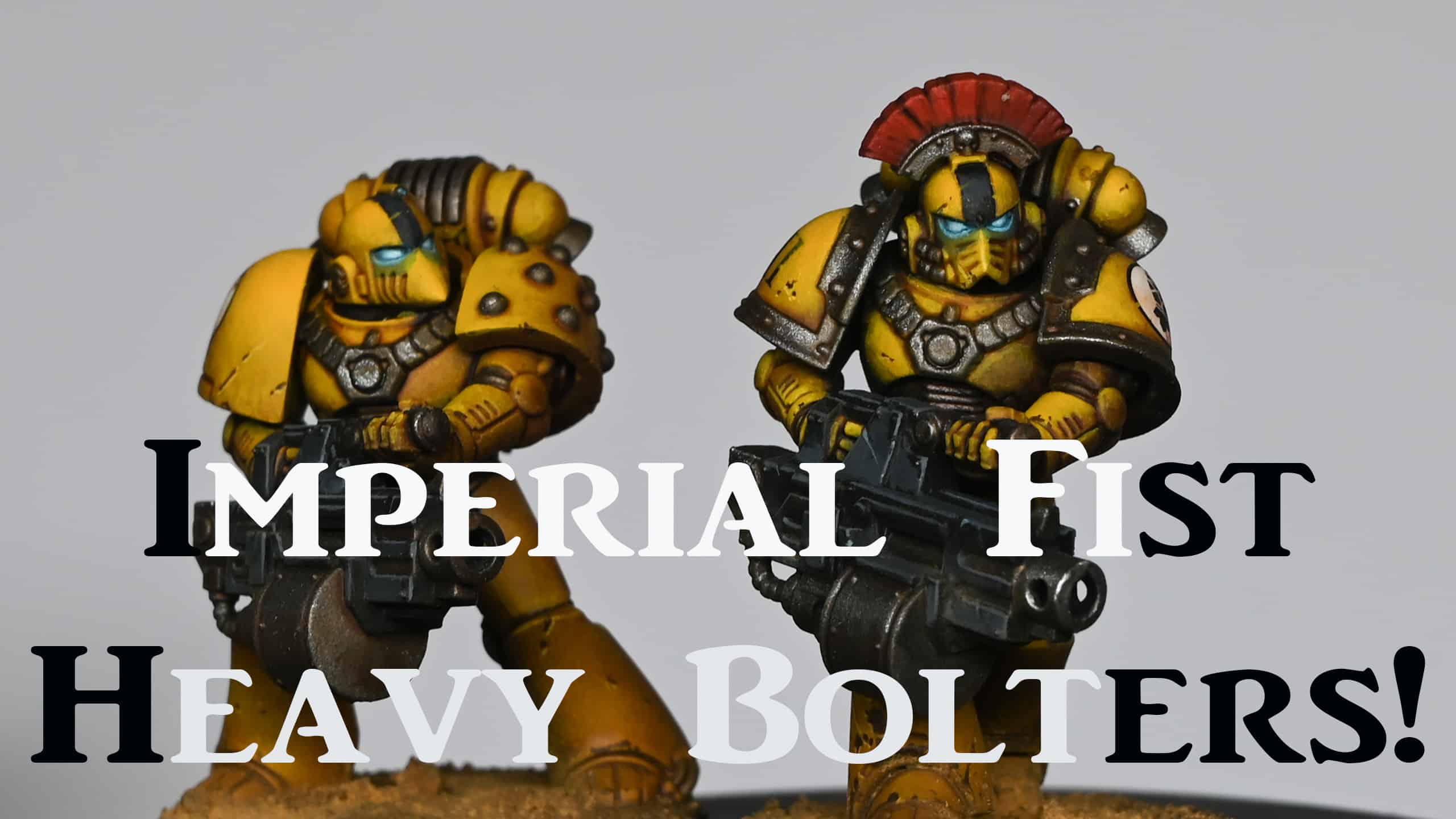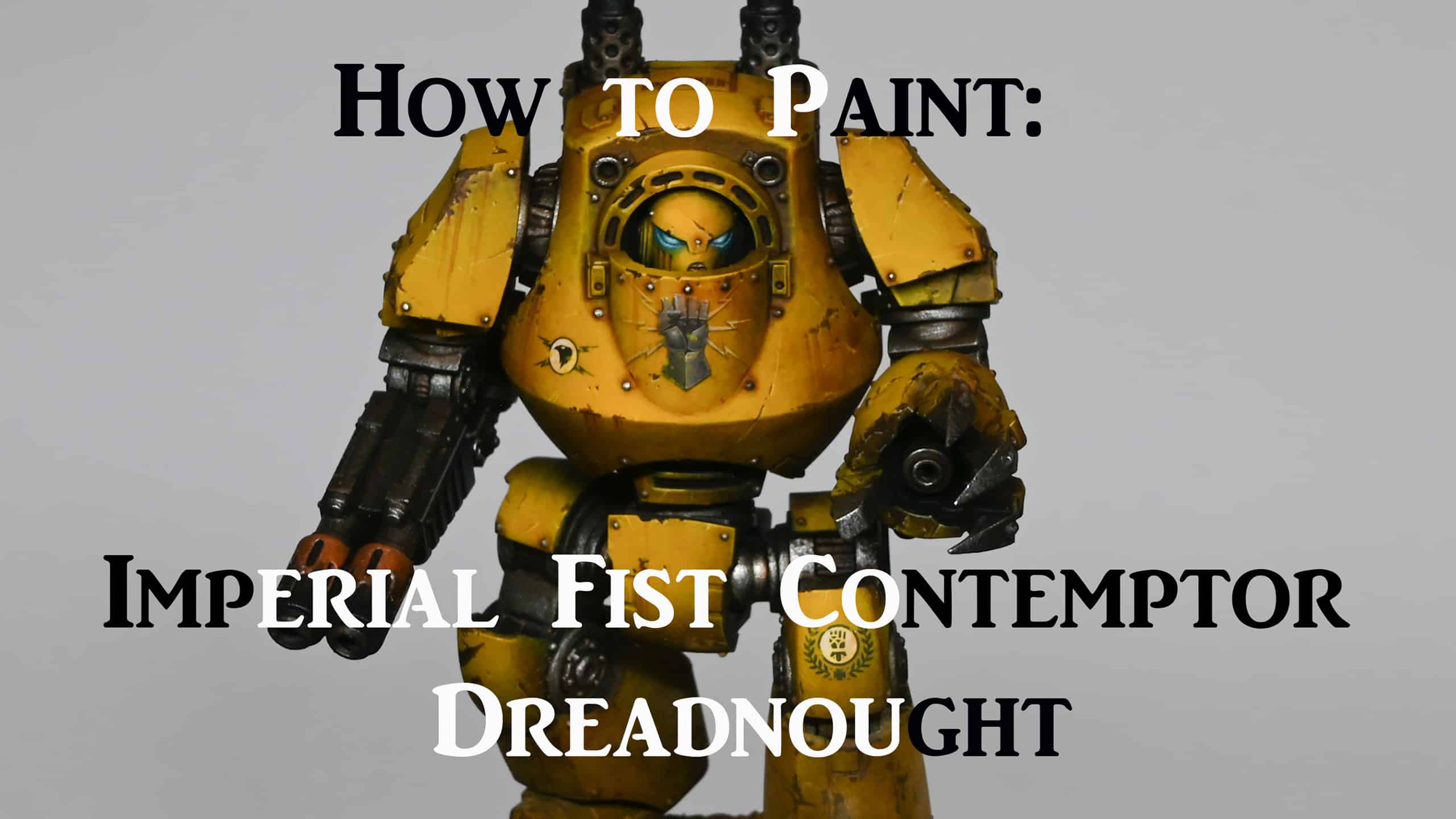This tutorial with video will guide you through how to paint an orange Blood Angel Space Marine with a unique orange twist to his armour. Painted as part of Movember for mental health awareness, this model also features a freehand moustache as a quirky homage to the cause. One of the key challenges of this project was working with Troll Slayer Orange—an infamously tricky paint—and blending it into the Blood Angels’ classic aesthetic, reminiscent of their older colour schemes.
Video: How to Paint an Orange Blood Angel
Paints Used
Games Workshop
- Mephiston Red
- Rhinox Hide
- Balor Brown
- XV-88
- Troll Slayer Orange
- Sotek Green
- Contrast Medium
- Contrast Dark Oath Flesh
Vallejo
- Ice Yellow
- Black
- Neutral Grey
- Metal Colour Exhaust Manifold
- Game Colour Scarlet Blood
Scale 75
- Necro Gold
P3
- Morrow White
AK 3rd Gen (Optional)
- Golden Brown
- Light Brown
Step-By-Step – How to Paint an Orange Blood Angel
1. Basecoat with Mephiston Red
- Method: Begin by stippling Mephiston Red over a black-primed model using a small drybrush. This base layer ensures smoother transitions when applying the Troll Slayer Orange later, as orange paint is notoriously translucent over black.
- Consistency: Thin the Mephiston Red with a 50/50 mix of water and paint for better flow. Use a damp brush for stippling to achieve a consistent texture.
Tips:
- Regularly clean and dry your brush to avoid flooding the model with excess paint.
- Use a smaller, chunky brush to fill in hard-to-reach areas to eliminate visible primer in the recesses.
2. Add Scarlet Blood for Vibrancy
- Paint: Vallejo Scarlet Blood
- Method: Stipple this matte red paint over the basecoat, focusing on areas that catch light, such as the chest, shoulder pads, and helmet. This adds richness to the tone while subtly transitioning towards orange.
- Placement: Apply with precision, keeping the brush perpendicular to the model to avoid drybrush streaks.
Alternatives:
- Evil Sunz Scarlet can be used instead if you prefer GW paints, but Scarlet Blood offers excellent coverage and vibrancy.
3. Highlight with Troll Slayer Orange
- Paint: Troll Slayer Orange
- Method: Thin the orange paint (1:1 water to paint) and apply it to the raised areas in multiple thin layers. Its translucency works in your favour, blending naturally with the red beneath.
- Technique: Work around the model, allowing sections to dry before returning for additional layers. This prevents muddy transitions and creates a soft gradient.
Pro Tip:
- For a less orange look, mix Scarlet Blood with small amounts of white or yellow to lighten highlights without veering too far into orange territory.
4. Shade with Contrast Dark Oath Flesh
- Paint: Contrast Dark Oath Flesh + Contrast Medium
- Method: Apply a diluted wash of Dark Oath Flesh over the entire model. This acts as a filter, unifying the tones, shading the recesses, and reducing the vibrancy of the orange.
- Consistency: Use Contrast Medium instead of water to maintain the wash’s properties. Check for pooling and wick away excess with a clean, damp brush.
5. Painting Details and Metallics
- Metallic Paints: Vallejo Metal Colour Exhaust Manifold, Scale 75 Necro Gold (or Viking Gold)
- Method: Pick out the trim, weapon details, and any embellishments.
- Silver: Use Vallejo Exhaust Manifold for weaponry.
- Gold: Apply Necro Gold on selected trims (e.g., shoulder pads). Highlight with a lighter gold for emphasis.
Pro Tip:
- To create a weathered look, glaze Dark Oath Flesh over metallics for a patina effect.
6. Adding Glow to the Eyes
- Paints: Sotek Green, Ice Yellow, and White
- Steps:
- Paint the eye lenses with Ice Yellow to create a bright base.
- Glaze over with Sotek Green to establish the colour.
- Highlight the centre of the lens with Ice Yellow and pure White for the brightest point.
- Add Object Source Lighting (OSL): Thin Sotek Green and lightly glaze the surrounding areas to simulate a glow effect.
Tips:
- Focus OSL on areas in shadow for the most dramatic effect. If the surrounding armour is well-lit, the glow will appear less intense.
7. The Moustache
As a nod to Movember, the model features a freehand moustache on its faceplate.
- Basecoat: Use Golden Brown for the initial design.
- Highlight: Build up with Ice Yellow for a metallic gold appearance.
- Symmetry: For best results, face the model head-on while painting and use short, confident brush strokes.
Pro Tip:
- If you make a mistake, mix Rhinox Hide and Troll Slayer Orange to “erase” errors and blend corrections seamlessly.
8. Final Touches and Base
- Decals: Apply transfers with Micro Set to conform them to the armour, then stipple over with basecoat colours for a weathered look.
- Base: Keep it simple—sand painted with Agrax Earthshade, finished with a touch of weathering powder.
This project was a fun challenge, blending unconventional colours into a Blood Angels scheme while supporting an important cause. Whether you tackle the freehand mustache or adapt the colour palette for your own chapter, the techniques here can add character and vibrancy to any Space Marine.
If you want to support the Movember mental health campaign, check out the link below: https://movember.com/m/15175299
Videos Not Showing?
To view any of my paid tutorials, you need to be a member of the website – please click below to log in or join the site.
Not sure about joining just yet? Check out my Youtube for all my free tutorials or sign up as a free “friend” member on this site and visit the free videos page!
If you’d prefer to support me on Patreon, please visit: https://www.patreon.com/RichardGray






